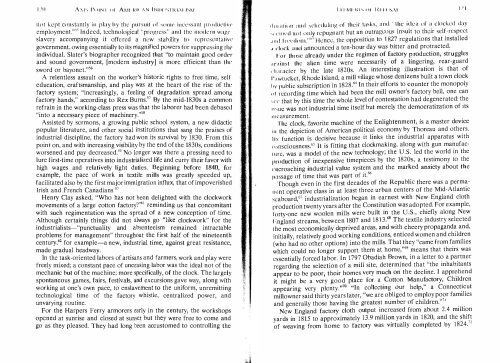CONTENTS - ouroboros ponderosa
CONTENTS - ouroboros ponderosa
CONTENTS - ouroboros ponderosa
Create successful ePaper yourself
Turn your PDF publications into a flip-book with our unique Google optimized e-Paper software.
,\ .\1', ('( liNT ()] !\1\·l I IW .. \N (NIII I';' ]']{ I:\I ISM<br />
not kept constant ly ill play hy the pursuit or SOllle incessant pr()ductive<br />
cmploymcnt.m s lndccd, technological "progress" and the Illodern wagl'<br />
slavery accompanying it offered a new stahility to representative<br />
government, owing essentially to its magnified powers ti)r suppressing III\'<br />
individual. Slater's biographer recognized that "to maintain good order<br />
and sound government, [modern industry] is more efficient than tht'<br />
sword or bayonet." "<br />
A relentless assault on the worker's historic rights to free time, self<br />
education, craftsmanship, and play was at the hcart of the rise of tht'<br />
factory system; "increasingly, a feeling of degradation spread among<br />
factory hands," according to Rex Burns. " By the mid-1830s a common<br />
refrain in the working-class press was that the laborer had been debased<br />
"into a necessary piece of machinery," 58<br />
Assisted by sermons, a growing public school system, a new didactic<br />
popular literature, and other social institutions that sang the praises of<br />
industrial discipline, the factory had won its survival by 1830. From this<br />
point on, and with increasing visibility by the end of the 1830s, conditions<br />
worsened and pay decreased. " No longer was there a pressing need to<br />
lure first-time operatives into industrialized life and curry their favor with<br />
high wages and relatively light duties. Beginning before 1840, for<br />
example, the pace of work in textile mills was greatly speeded up,<br />
facilitated also by the first major immigration influx, that of impoverished<br />
Irish and French Canadians ."<br />
Henry Clay asked, "Who has not been delighted with the clockwork<br />
movements of a large cotton factory?" " reminding us that concomitant<br />
with such regimentation was the spread of a new conception of time.<br />
Although certainly things did not always go "like clockwork" for the<br />
industrialists-"punctuality and absenteeism remained intractable<br />
problems for management" throughout the first half of the nineteenth<br />
century, " for example-a new, industrial time, against great resistance,<br />
made gradual headway.<br />
In the task-oriented labors of artisans and farmers, work and play were<br />
freely mixed; a constant pace of unceasing labor was the ideal not of the<br />
mechanic but of the machine: more specifically, of the clock. The largely<br />
spontaneous games, fairs, festivals, and excursions gave way, along with<br />
working at one's own pace, to enslavement to the uniform, unremitting<br />
technological time of the factory whistle, centralized power, and<br />
unvarying routine.<br />
For the Harpers Ferry armorers early in the century, the workshops<br />
opened at sunrise and closed at sunset but they were free to come and<br />
go as they pleased. They had long been accustomed to controlling the<br />
I ,I I ' M I ' N 1 \ ( II' 1






